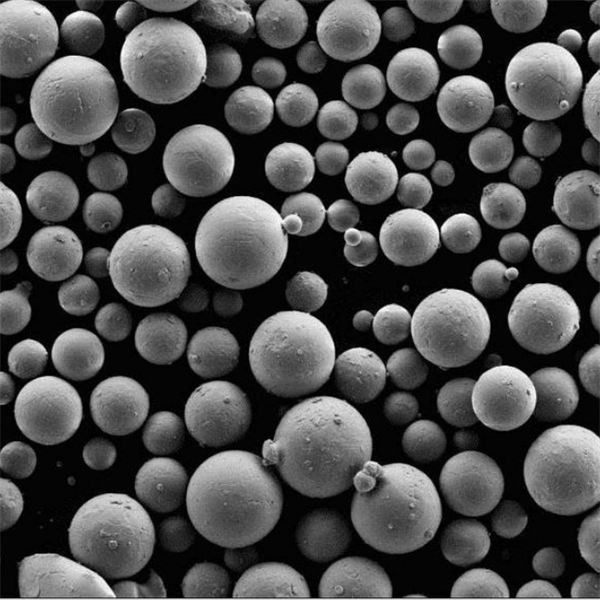High-Temperature Alloy Nb521
Table of Contents
High-temperature alloys are crucial in industries where materials must withstand extreme conditions, such as aerospace and energy production. One such advanced material is the high-temperature alloy Nb521. This article delves into the intricate details of Nb521, its properties, applications, and comparisons with other alloys, offering a thorough understanding for professionals and enthusiasts alike.
Overview of High-Temperature Alloy Nb521
High-temperature alloy Nb521 is designed to perform under severe thermal conditions. It boasts a blend of high melting point, resistance to oxidation, and strength at elevated temperatures. This alloy is often employed in environments where conventional materials would fail due to thermal degradation or mechanical stress.

Composition of High-Temperature Alloy Nb521
High-temperature alloy Nb521 is primarily composed of:
- Niobium (Nb): The central element that imparts strength and stability.
- Tungsten (W): Enhances high-temperature strength and thermal stability.
- Molybdenum (Mo): Contributes to the alloy’s hardness and corrosion resistance.
- Iron (Fe): Adds structural integrity and strength.
- Carbon (C): Improves hardness and wear resistance.
The specific percentages of these elements can vary, but a typical composition might look like this:
- Niobium (Nb): 45-55%
- Tungsten (W): 20-25%
- Molybdenum (Mo): 15-20%
- Iron (Fe): 5-10%
- Carbon (C): 0.5-1%
Properties and Characteristics
Nb521 is celebrated for its exceptional properties, making it suitable for extreme environments. Here’s a detailed look at its characteristics:
- High Melting Point: Nb521 has a melting point around 3,000°C (5,432°F), allowing it to maintain integrity under intense heat.
- Oxidation Resistance: The alloy exhibits excellent resistance to oxidation, crucial for high-temperature applications.
- Thermal Stability: Maintains its mechanical properties even when subjected to prolonged high temperatures.
- Strength and Hardness: Exhibits superior strength and hardness compared to many other high-temperature alloys.
- Corrosion Resistance: Shows good resistance to corrosive environments, enhancing its longevity.
Applications of High-Temperature Alloy Nb521
Due to its robust characteristics, Nb521 is used in various demanding applications:
- Aerospace Components: Engine parts, exhaust systems, and turbine blades.
- Energy Production: Components for gas turbines and nuclear reactors.
- Industrial Processes: Parts in high-temperature furnaces and reactors.
Specifications, Sizes, and Grades
High-temperature alloy Nb521 comes in various forms and specifications to suit different needs. Here’s a snapshot of its typical specifications:
| Property | Details |
|---|---|
| Melting Point | Approximately 3,000°C (5,432°F) |
| Density | 9.2 g/cm³ |
| Hardness | Rockwell C 60-70 |
| Tensile Strength | 800-1,200 MPa |
| Yield Strength | 600-1,000 MPa |
Suppliers and Pricing
Finding reliable suppliers for Nb521 can be essential for procurement. Here’s an overview of potential sources and pricing ranges:
| Supplier | Location | Pricing |
|---|---|---|
| Supplier A | USA | $200/kg |
| Supplier B | Germany | $220/kg |
| Supplier C | Japan | $210/kg |
| Supplier D | China | $180/kg |
(Note: Pricing can vary based on order quantity and market conditions.)
Pros and Cons of High-Temperature Alloy Nb521
Like any material, Nb521 has its advantages and limitations. Here’s a comparative analysis:
| Aspect | Pros | Cons |
|---|---|---|
| Temperature Resistance | Excellent at very high temperatures | Higher cost compared to standard alloys |
| Strength | Superior strength and hardness | Difficult to machine |
| Corrosion Resistance | Good resistance to oxidation and corrosion | Limited availability of suppliers |
| Cost | Durable and long-lasting | Higher initial investment |
Comparing Nb521 with Other High-Temperature Alloys
Let’s see how Nb521 stacks up against other high-temperature alloys such as Inconel 718 and Hastelloy X:
| Feature | Nb521 | Inconel 718 | Hastelloy X |
|---|---|---|---|
| Melting Point | ~3,000°C (5,432°F) | ~1,300°C (2,372°F) | ~1,300°C (2,372°F) |
| Strength | Higher at extreme temperatures | Good overall strength | Excellent high-temperature strength |
| Cost | Generally higher | Moderate | High |
| Oxidation Resistance | Excellent | Good | Good |

FAQ
| Question | Answer |
|---|---|
| What is Nb521 used for? | Nb521 is used in high-temperature applications like aerospace components, energy production, and industrial processes. |
| How does Nb521 compare to Inconel 718? | Nb521 offers superior temperature resistance compared to Inconel 718 but at a higher cost. |
| Is Nb521 difficult to machine? | Yes, Nb521 can be challenging to machine due to its hardness and strength. |
| What are the main benefits of using Nb521? | Key benefits include high temperature stability, strength, and corrosion resistance. |
| Where can I buy Nb521? | Nb521 can be sourced from specialized suppliers in the USA, Germany, Japan, and China. |
High-temperature alloy Nb521 is a remarkable material tailored for extreme environments. With its high melting point, robust mechanical properties, and resistance to oxidation, it stands out in its field. Whether you’re considering it for aerospace, energy, or industrial applications, understanding its properties and comparing it to other alloys can help make informed decisions.
Share On
MET3DP Technology Co., LTD is a leading provider of additive manufacturing solutions headquartered in Qingdao, China. Our company specializes in 3D printing equipment and high-performance metal powders for industrial applications.
Inquiry to get best price and customized Solution for your business!
Related Articles
About Met3DP
Recent Update
Our Product
CONTACT US
Any questions? Send us message now! We’ll serve your request with a whole team after receiving your message.

Metal Powders for 3D Printing and Additive Manufacturing
COMPANY
PRODUCT
cONTACT INFO
- Qingdao City, Shandong, China
- [email protected]
- [email protected]
- +86 19116340731
















